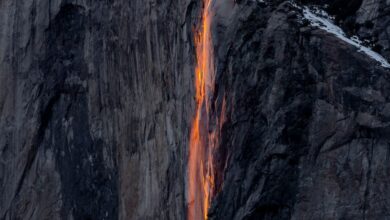How Do You Photograph Wildlife on a Safari
Embarking on a safari is a thrilling adventure that offers a unique opportunity to capture the beauty of wildlife in their natural habitats. However, photographing these majestic creatures requires more than just a camera and a keen eye. To truly succeed in wildlife photography, one must understand the nuances of the environment, the behavior of animals, and the technical aspects of photography. Here’s how to elevate your wildlife photography skills on safari.
Choosing the Right Equipment
Before you set off on your safari, it’s crucial to ensure you have the right gear. A DSLR or mirrorless camera is ideal, as these allow for interchangeable lenses and superior image quality. A versatile zoom lens, such as a 100-400mm or 70-200mm, can help you capture both distant and close-up shots without disturbing the wildlife. Additionally, consider bringing a sturdy tripod or monopod for stability, especially when shooting in low-light conditions.
Don’t forget essential accessories like extra batteries, memory cards, and a lens cleaning kit. Wildlife photography often involves long days in the field, and the last thing you want is to run out of storage or power just as you’re about to capture that perfect moment. A good camera bag that can withstand dust and moisture is also a smart investment.
Understanding Animal Behavior
To photograph wildlife effectively, you must learn to read animal behavior. Different species have unique patterns—some are more active during dawn and dusk, while others may be nocturnal. Observing these habits can help you plan your shooting schedule for the best opportunities. For instance, lions are typically more visible in the early morning or late afternoon when they are most active.
Patience is key in wildlife photography. Animals often take their time to move into perfect positions, and forcing the moment can lead to missed opportunities. Spend time quietly observing, allowing the animals to become accustomed to your presence. This approach will ultimately yield more natural and compelling images.
Mastering Composition Techniques
Composition is a critical element in wildlife photography. Use the rule of thirds to create dynamic and engaging images. Position your subject off-center to draw the viewer’s eye and create a more balanced photograph. Additionally, varying your angles can drastically change the perspective of your images. Shooting from a lower angle can make animals appear more imposing, while capturing them from above can provide context within their environment.
Incorporating the surroundings is also vital. A wide shot that includes the landscape can tell a more comprehensive story about the animal’s habitat. Look for interesting foreground elements or leading lines that draw the eye toward your subject, enhancing the overall composition.
Utilizing Light to Your Advantage
Light can make or break a photograph. The golden hours—shortly after sunrise and just before sunset—offer the best natural lighting conditions for wildlife photography. The soft, warm tones during these times create a magical quality and reduce harsh shadows. If you’re shooting mid-day when the sun is high, look for shaded areas or use a polarizing filter to manage glare and reflections.
Always be aware of your background and how it interacts with your subject. A busy or distracting background can detract from the focal point of your image. If possible, position yourself to have a clean background that complements the colors and shapes of the wildlife.
Capturing Emotion and Storytelling
Great wildlife photography goes beyond technical skills; it involves storytelling. Seek to capture moments that evoke emotion, whether it’s a mother nurturing her cubs or a bird in mid-flight. Anticipate behavior and be ready to shoot at a moment’s notice. The ability to tell a story through your images will resonate more profoundly with viewers and bring your photographs to life.
Embracing the Experience
Above all, remember that wildlife photography on safari is as much about the experience as it is about the images you capture. Take time to immerse yourself in the surroundings and appreciate the beauty of nature. Each moment spent observing wildlife offers invaluable lessons that can enhance your photography.
With practice and perseverance, you can develop the skills needed to capture breathtaking wildlife photographs. Embrace the journey and let your passion for photography guide you in creating stunning visual narratives that celebrate the incredible world of wildlife.







